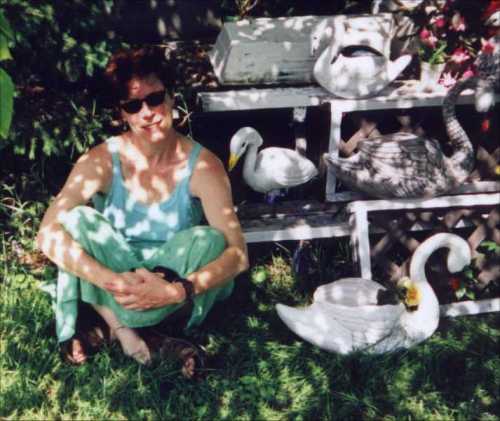Trixie in Toyland
Bastions of Boyland series: the Hobby Store

Open the door, walk in and what do you see? Floor to ceiling fuzzy stuff for trainsets, paints in every colour, every hue, authentic paints exactly like those applied to machines of war: battleships, fighter planes, tanks, no matter which war or whose side, they are all represented. And there are the boxed models. Take a moment to figure out the classification system: German planes, American ships: there’s one with Japanese lettering on the box; it’s the SS Missouri, sunk in Pearl Harbour in 1942. Sixty years is long enough to produce two or three new generations who weren’t there to hear the particular noises of war or to notice how frail the human body is when the physics of explosions come to bear upon it.
Trixie was around during the televised series entitled “the US invasion of Iraq, 2003 version”. She was fascinated to watch her boyfriends watching the endless commentary and wavery pictures of dust-coloured vehicles grinding across the desert. She suspects they thought they were disinterested observers but further suspects that in imagination, they were stuffed into one of those tanks, at the controls of one of those impressive aircraft, in charge of some piece of that cutting-edge technology. Adrenalin, yeah. A moment was enough for Trixie to ascertain that the war was not yet over and that some more people had been killed by accident or on purpose. Then she wanted to turn away from the screen and bake something or play some music. But the boys liked a more detailed update.
The trip to the hobby store shed some light on this gender-specific difference in preferences: here were the archives of boyland. Here was the historical catalogue of vehicles, in minute detail the advancement of technology, of good ideas, of experimentation as a wing angle changed or weight was redistributed or a water tank relocated. Though all materials are represented in plastic or balsa, paint colours could differentiate between metal and fibreglass, canvas and silk. A person could be infinitely nerdy in here. What joy in the minutiae for those so inclined. If machines of war were not your first interest, there were motorcycles, vintage cars, figurines in the armour of every era and tribe since the Celts.
The ratio of women and girls to boys and men was about 1:10 and that included the woman clerk in the crafts section. In fact, most female customers were browsing the artists’ supplies and the doll houses while the men were guiding their offspring through the intricacies of model railroading or choosing the next model to pore over under the dining room light. No wonder most men are more interested in war and machines than is Trixie: they know what they’re looking at. They appreciate the delicacy and genius that combines to form a vehicle, to make it work efficiently, to get the job done with it. Trixie, on the other hand, finds her interest shallow at best; when confronted with an incomprehensible array of wingstruts and railroad ties, ballast specifications and instrument ratings, she stifles a yawn, or perhaps a little flutter of panic at the thought of this vast world about which she knows almost nothing. Is it too late to catch up? Or should she just pretend, as usual in her forays into Boyland, that she knows more than she does, and then change the subject as soon as decently possible?
